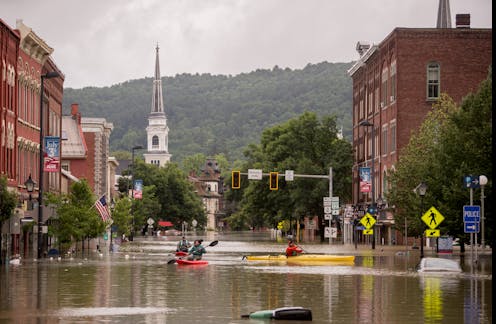
The year 2023 was marked by extraordinary heat, wildfires and weather disasters.
In the U.S., an unprecedented heat wave gripped much of Texas and the Southwest with highs well over 100 degrees Fahrenheit (37.8 Celsius) for the entire month of July.
Historic rainfall in April flooded Fort Lauderdale, Florida, with 25 inches of rain in 24 hours. A wave of severe storms in July sent water pouring into cities across Vermont and New York. Another powerful system in December swept up the Atlantic coast with hurricane-like storm surge and heavy rainfall. California faced flooding and mudslides from a series of atmospheric rivers early in the year, then was hit in August by a tropical storm – an extremely rare event there.
Wildfires ravaged Hawaii, Louisiana and several other states. And Canada’s worst fire season on record sent thick smoke across large parts of North America.
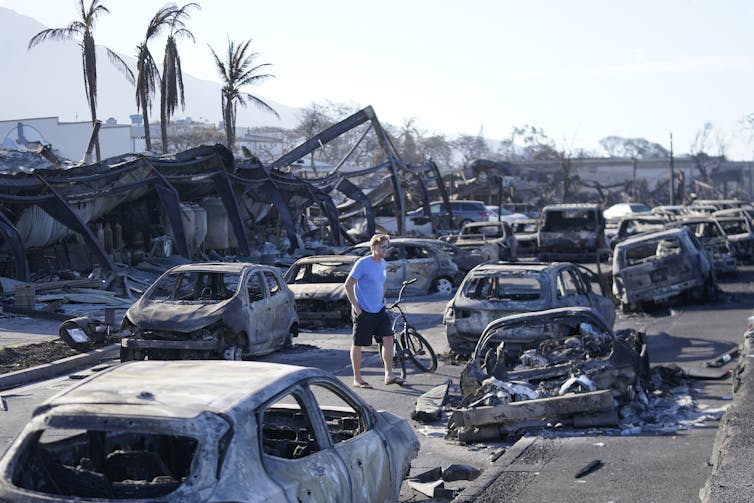
Globally, 2023 was the warmest year on record, and it wreaked havoc around the world. El Niño played a role, but global warming is at the root of the world’s increasing extreme weather.
So, how exactly is global warming linked to fires, storms and other disasters? I am an atmospheric scientist who studies the changing climate. Here’s what you need to know.
Dangerous heat waves and devastating wildfires
When greenhouse gases, such as carbon dioxide from vehicles and power plants, accumulate in the atmosphere, they act like a thermal blanket that warms the planet.
These gases let in high-energy solar radiation while absorbing outgoing low-energy radiation in the form of heat from the Earth. The energy imbalance at the Earth’s surface gradually increases the surface temperature of the land and oceans.
The most direct consequence of this warming is more days with abnormally high temperatures, as many countries saw in 2023.
Extreme heat waves hit large areas of North America, Europe and China, breaking many local high temperature records. Phoenix went 30 days with daily high temperatures at 110 F (43.3 C) or higher and recorded its highest minimum nighttime temperature, with temperatures on July 19 never falling below 97 F (36.1 C).
Although heat waves result from weather fluctuations, global warming has raised the baseline, making heat waves more frequent, more intense and longer-lasting.
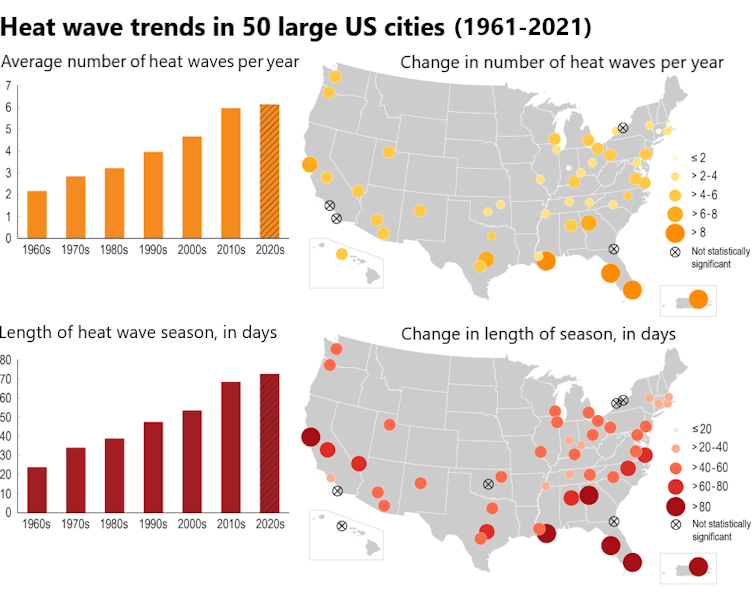
That heat also fuels wildfires.
Increased evaporation removes more moisture from the ground, drying out soil, grasses and other organic material, which creates favorable conditions for wildfires. All it takes is a lightning strike or spark from a power line to start a blaze.
Canada lost much of its snow cover early in 2023, which allowed the ground to dry and vast fires to burn through the summer. The ground was also extremely dry in Maui in August when the city of Lahaina, Hawaii, caught fire during a windstorm and burned.
How global warming fuels extreme storms
As more heat is stored as energy in the atmosphere and oceans, it doesn’t just increase the temperature – it can also increase the amount of water vapor in the atmosphere.
When that water vapor condenses to liquid and falls as rain, it releases a large amount of energy. This is called latent heat, and it is the main fuel for all storm systems.
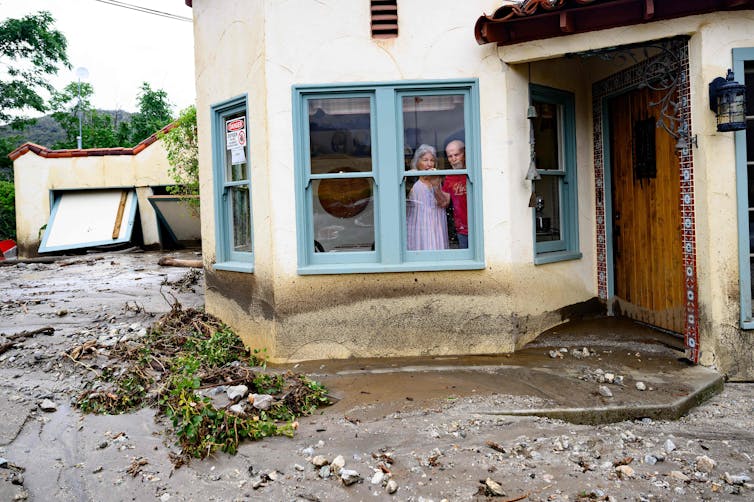
When temperatures are higher and the atmosphere has more moisture, that additional energy can fuel stronger, longer-lasting storms. This is the main reason for 2023’s record-breaking storms. Nineteen of the 25 weather and climate disasters that caused over US$1 billion in damage each through early December 2023 were severe storms, and two more were flooding that resulted from severe storms.
Tropical storms are similarly fueled by latent heat coming from warm ocean water. That is why they only form when the sea surface temperature reaches a critical level of around 80 F (27 C).
With 90% of the excess heat from global warming being absorbed by the ocean, there has been a significant increase in the global sea surface temperature, including record-breaking levels in 2023.
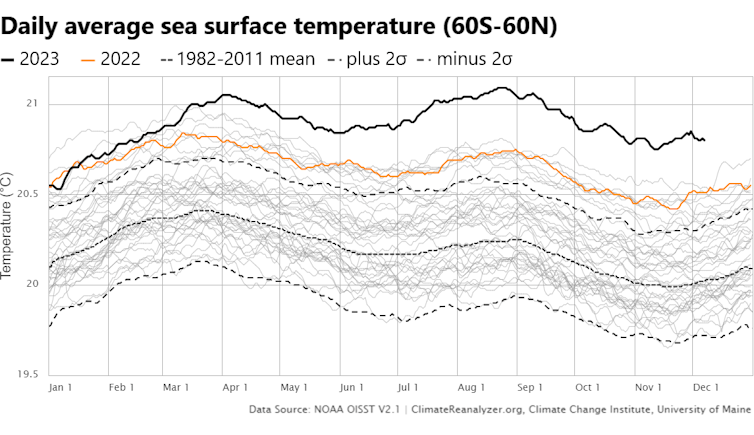
Higher sea surface temperatures can lead to stronger hurricanes and longer hurricane seasons. They can also lead to the faster intensification of hurricanes.
Hurricane Otis, which hit Acapulco, Mexico, in October 2023, was a devastating example. It exploded in strength, rapidly intensifying from a tropical storm to a destructive Category 5 hurricane in less than 24 hours. With little time to evacuate and buildings not designed to withstand a storm that powerful, more than 50 people died. The hurricane’s intensification was the second-fastest ever recorded, exceeded only by Hurricane Patricia in 2015.
A recent study found that North Atlantic tropical cyclones’ maximum intensification rates increased 28.7% between the 1971-1990 average and the 2001-2020 average. The number of storms that spun up from a Category 1 storm or weaker to a major hurricane within 36 hours more than doubled.
The Mediterranean also experienced a rare tropical-like cyclone in September 2023 that offers a warning of the magnitude of the risks ahead – and a reminder that many communities are unprepared. Storm Daniel became one of the deadliest storms of its kind when it hit Libya. Its heavy rainfall overwhelmed two dams, causing them to collapse, killing thousands of people. The heat and increased moisture over the Mediterranean made the storm possible.
Cold snaps have global warming connections, too
It might seem counterintuitive, but global warming can also contribute to cold snaps in the U.S. That’s because it alters the general circulation of Earth’s atmosphere.
The Earth’s atmosphere is constantly moving in large-scale circulation patterns in the forms of near-surface wind belts, such as the trade winds, and upper-level jet streams. These patterns are caused by the temperature difference between the polar and equatorial regions.
As the Earth warms, the polar regions are heating up more than twice as fast as the equator. This can shift weather patterns, leading to extreme events in unexpected places. Anyone who has experienced a “polar vortex event” knows how it feels when the jet stream dips southward, bringing frigid Arctic air and winter storms, despite the generally warmer winters.
In sum, a warmer world is a more violent world, with the additional heat fueling increasingly more extreme weather events.
Shuang-Ye Wu does not work for, consult, own shares in or receive funding from any company or organization that would benefit from this article, and has disclosed no relevant affiliations beyond their academic appointment.
This article was originally published on The Conversation. Read the original article.






